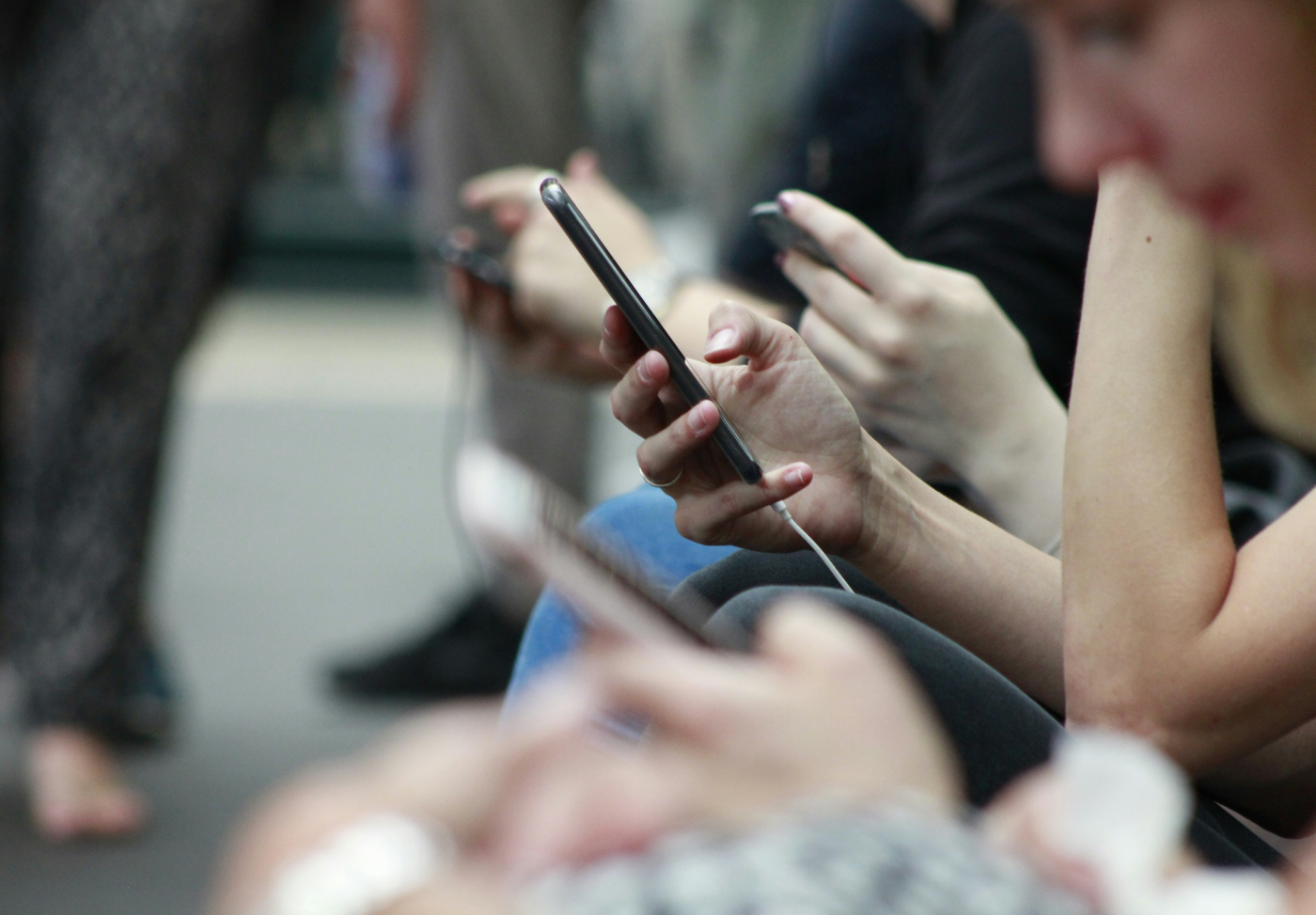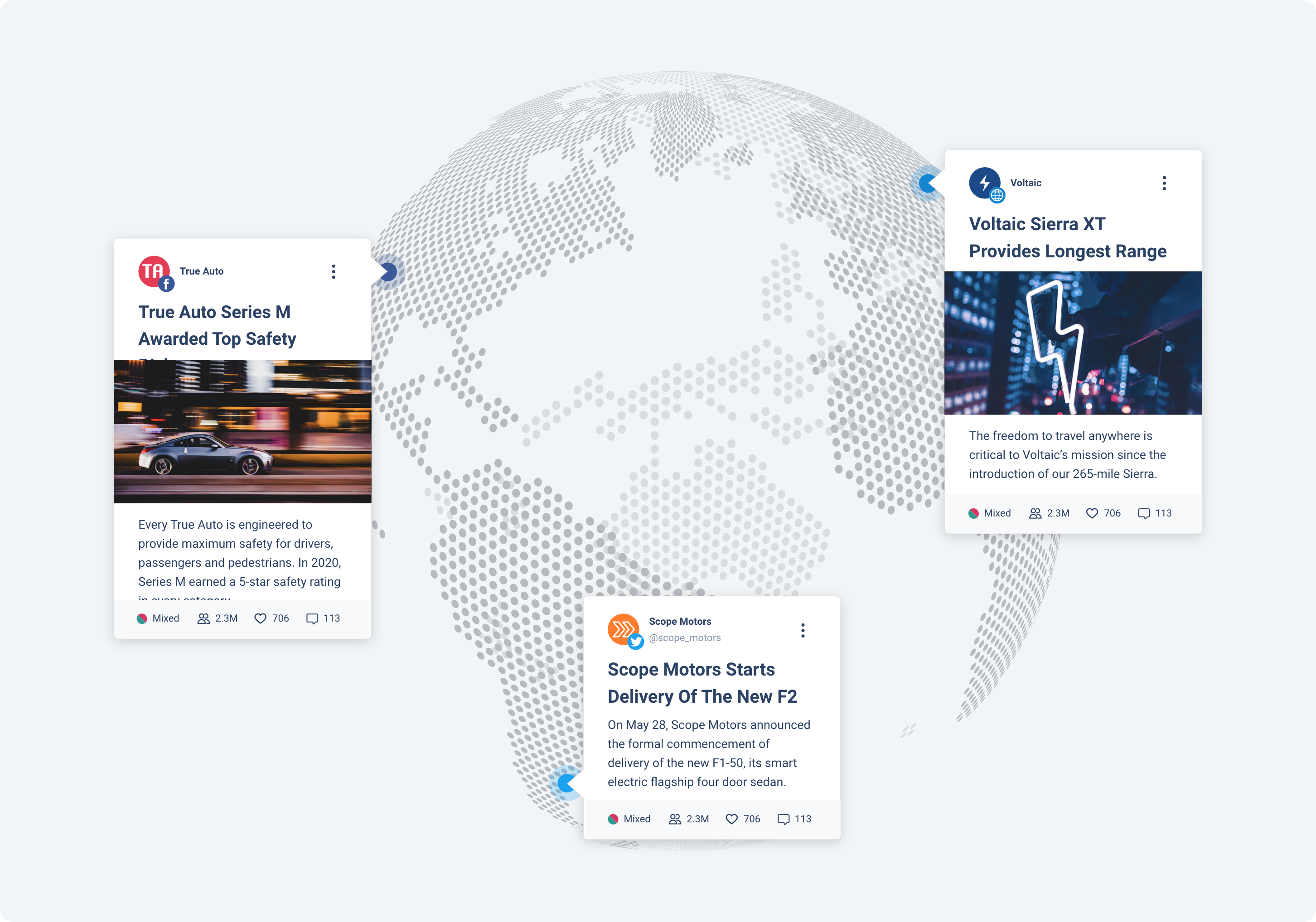
The Essential Guide to Implementing Brand Monitoring Solutions for Real-Time Insights
Did you know that 87 percent of consumers are willing to pay more for products from brands they trust, and 69 percent of shoppers make purchases while multitasking, such as scrolling social media or watching streaming services?
Consumer Trust as a Driver for Purchase Decisions
A 2025 consumer research report indicates that a significant majority of shoppers, 87%, are willing to pay more for products from brands they trust. This highlights the critical role of trust in influencing purchasing behavior and brand loyalty.
This research directly supports the article's assertion that consumers prioritize trust in a brand before making purchasing decisions.
This reality makes implementing a robust brand monitoring solution imperative for capturing real-time insights that drive reputation management, competitive intelligence, crisis prevention, and data-driven marketing. In this guide you’ll learn:
- Foundational concepts and distinctions between media, social media, and brand monitoring
- Core technologies like sentiment analysis and mention tracking
- Selecting, configuring, and integrating top tools for 2025
- Leveraging AI/ML for predictive analytics
- Proactive crisis and reputation management strategies
- Ethical data practices and ROI measurement frameworks
By the end, you will understand how to harness brand monitoring solutions to transform raw mentions into actionable business outcomes.
The Impact of Social Media on Consumer Purchasing Choices
A study on consumer behavior reveals that a substantial percentage of consumers, 70%, are influenced by social media when making purchasing choices, with 54% actively researching products on these platforms prior to purchase.
This citation verifies the article's claim about the significant role social media plays in shaping consumer preferences and influencing shopping behavior.

What Is Brand Monitoring and Why Is It Essential for Real-Time Insights?
Brand monitoring is the process of tracking and analyzing every mention of a brand across digital channels to extract immediate, actionable understanding. This approach enables companies to detect shifts in public perception, respond to emerging issues, and inform strategic decisions. For example, capturing a surge in negative product feedback within minutes allows rapid corrective action and prevents reputational damage. Understanding these fundamentals sets the stage for deploying solutions that provide continuous, context-rich insights.
How Does Brand Monitoring Track Mentions Across Digital Channels?
Brand monitoring tracks mentions by employing automated crawlers, public APIs, and RSS feeds to scan websites, social networks, forums, blogs, news outlets, and review sites. These systems ingest brand keywords and synonyms in real time, normalize the data, and route alerts to dashboards or communication platforms. By leveraging both scheduled and event-driven data collection, businesses achieve comprehensive visibility and immediate detection of high-impact mentions. Mapping these tracking methods prepares you to distinguish among overlapping monitoring approaches.
What Are the Differences Between Brand Monitoring, Social Media Monitoring, and Media Monitoring?

Each approach serves a distinct purpose: brand monitoring provides an all-in view, social media monitoring zeroes in on social conversations, and media monitoring scans traditional and digital press. Selecting the right mix ensures you capture the most relevant brand signals before they escalate.
What Key Benefits Does Real-Time Brand Monitoring Provide?
Real-time brand monitoring improves reputation management by enabling immediate corrective responses, enhances competitive intelligence through live trend tracking, prevents crises by flagging spikes in negative sentiment, drives customer engagement by surfacing service issues instantly, and optimizes marketing by aligning campaigns with live audience feedback. These capabilities transform passive listening into proactive brand stewardship that supports both reactive and strategic initiatives.
How Do Sentiment Analysis and Mention Tracking Enhance Brand Monitoring Solutions?
Sentiment analysis and mention tracking work together to quantify emotional tone and map conversation volume, powering deeper understanding of brand perception. Sentiment analysis applies natural language processing to determine positive, negative, or neutral attitudes, while mention tracking captures the frequency and context of brand references. Together they enable data-driven decisions on messaging, product improvements, and crisis response.
What Techniques and Tools Are Used for Sentiment Analysis in Brand Monitoring?
Sentiment analysis techniques include lexicon-based methods that match words to sentiment scores, machine learning classifiers trained on labeled data, and hybrid approaches combining both. Advanced tools employ deep learning models like transformers for nuanced context detection and aspect-based analysis to isolate sentiment on specific product features. By applying these techniques, brands quantify emotional trends and tailor communications with precision.
How Is Mention Tracking Conducted Across Social Media, News, Blogs, and Forums?
Mention tracking uses a blend of web crawlers, platform APIs, RSS aggregation, and webhook integrations to collect data from disparate sources at configurable intervals. Social networks yield live streams via APIs, news outlets and blogs are scanned hourly or daily, and forums often require custom scrapers. This multi-channel approach ensures no brand mention goes unnoticed and delivers a unified dataset for analysis. Capturing mentions consistently across channels underpins accurate sentiment insights and competitive benchmarking.
How Does Sentiment Analysis Quantify Brand Perception?
Sentiment analysis quantifies brand perception by assigning sentiment scores to each mention, aggregating them into an overall index, and tracking shifts over time. Common steps include tokenizing text, filtering stop words, comparing terms against sentiment lexicons, and applying classifier probabilities. This process converts subjective opinions into objective metrics, allowing teams to set alert thresholds and benchmark performance against competitors.
Which Brand Monitoring Tools Are Best for 2025 and How Do You Implement Them?
2025’s top brand monitoring tools provide multi-channel coverage, real-time alerts, customizable dashboards, AI-powered analytics, and seamless integrations. Implementing these solutions involves selecting features aligned with your objectives, configuring monitoring parameters, and embedding them into your marketing and customer service workflows.
What Features Should You Look for in Top Brand Monitoring Software?
Before choosing a solution, look for real-time alerting that flags high-impact mentions, sentiment analysis with customizable models, multi-language support, competitive benchmarking modules, API access for data export, and role-based dashboards. These features ensure the platform scales with your organization, adapts to evolving brand keywords, and supports cross-team collaboration.

How Do You Set Up Monitoring Parameters: Keywords, Sources, and Alerts?
Start by defining a comprehensive keyword list—including brand names, product lines, executive names, and industry terms—then select source categories such as social media, news sites, blogs, review forums, and podcasts. Configure alert rules that trigger notifications for negative sentiment spikes, emerging hashtags, or competitor mentions. Testing and refining these parameters during a pilot phase ensures signal accuracy and prevents alert fatigue.
How Can AI and Machine Learning Improve Predictive Insights in Brand Monitoring?
AI and machine learning enhance brand monitoring by enabling predictive analytics, anomaly detection, and topic clustering that surface hidden patterns in unstructured data. These technologies support proactive decision-making by forecasting sentiment trends and highlighting emerging risks before they escalate.
What Role Does AI Play in Enhancing Sentiment Analysis and Anomaly Detection?
AI uses deep neural networks to detect nuanced sentiment expressions—such as sarcasm or mixed emotions—and applies unsupervised learning to identify anomalies in mention volumes or sentiment distributions. This rapid anomaly detection alerts teams to potential crises or viral opportunities, enabling a faster and more informed response than rule-based systems alone.
How Does Machine Learning Support Real-Time Data Processing and Predictive Analytics?
Machine learning models trained on historical mention and sentiment data automate classification and scoring of incoming mentions at scale. Online learning algorithms adapt to evolving language patterns, while time-series forecasting techniques predict future sentiment swings and mention volumes. This combination delivers real-time processing and forward-looking insights that guide proactive strategy adjustments.
What Future Trends Should Brands Expect in AI-Driven Brand Monitoring?
Brands can anticipate greater use of generative AI for summary generation, advanced entity tracking that recognizes emerging topics and named entities, conversational AI chatbots that triage customer concerns, and multimodal analysis that incorporates image and video content. These trends will deepen insight granularity and reduce manual effort, further accelerating real-time decision cycles.
How Do You Use Brand Monitoring for Proactive Reputation and Crisis Management?
Proactive reputation management leverages real-time insights to identify risk signals early, craft pre-emptive communications, and maintain stakeholder trust. Integrating brand monitoring into crisis playbooks ensures teams have immediate access to the right data for informed action.
What Strategies Enable Proactive Reputation Management Through Real-Time Insights?
Develop sentiment thresholds that trigger internal alerts, establish predefined response templates for common issues, assign ownership to response teams based on channel, and run regular simulation drills using live mention data. These strategies create a disciplined process that leverages real-time monitoring to protect brand image.
How Can Real-Time Alerts Help Detect and Prevent Brand Crises?
Real-time alerts flag sudden surges in negative sentiment, coordinated misinformation campaigns, or unauthorized content that could harm brand reputation. By routing these alerts to incident response teams and social media managers, organizations can issue timely clarifications, deploy counter-narratives, and engage with stakeholders before situations spiral.
How Does Brand Monitoring Support Customer Service and Data-Driven Marketing?
Brand monitoring surfaces product issues, service complaints, and feature requests in real time, enabling customer service teams to proactively resolve problems and marketing teams to tailor messaging based on live feedback. This continuous feedback loop supports data-driven content optimization and strengthens customer loyalty.
What Ethical and Privacy Considerations Are Critical When Implementing Brand Monitoring?
Ethical brand monitoring respects user privacy and adheres to data regulations by limiting collection to publicly available data, anonymizing personal identifiers, and securing consent where required. Establishing a governance framework ensures compliance and maintains consumer trust.
How Do You Ensure Ethical Data Collection and Privacy Compliance?
Implement data classification rules to exclude sensitive content, apply pseudonymization techniques to anonymize user data, enforce retention policies in line with GDPR and CCPA, and conduct regular audits of data sources and processing workflows. This approach protects individual rights and upholds legal obligations.
What Are the Risks of Unethical Brand Monitoring Practices?
Unethical practices—such as scraping private groups, storing personal identifiers without consent, or mining user profiles—can lead to reputational harm, regulatory fines, and loss of customer trust. Mitigating these risks requires transparent data policies and routine oversight by legal and compliance teams.
How Do You Measure the ROI and Effectiveness of Brand Monitoring Solutions?
Measuring ROI involves tracking key performance indicators that tie monitoring insights to tangible business outcomes, using case studies to illustrate impact, and employing specialized analytics tools to optimize performance continuously.
What Key Performance Indicators (KPIs) Track Brand Monitoring Success?
Effective KPIs include share of voice (SOV) against competitors, sentiment score trends, issue resolution time, volume of proactive engagements, campaign lift tied to real-time insights, and crisis response latency. These metrics quantify monitoring effectiveness and guide resource allocation.
How Can Case Studies Demonstrate the Impact of Brand Monitoring on Business Outcomes?
Case studies illustrate how real-time monitoring enabled a product recall to be announced swiftly, reducing negative sentiment by 60 percent, or how competitive intelligence influenced a successful new product launch. Highlighting percentage improvements, response times, and revenue impacts makes ROI tangible.
What Tools Help Continuously Monitor and Optimize Brand Monitoring Efforts?
Platforms offering built-in analytics, custom dashboards, A/B testing modules, and integration with BI tools such as Tableau or Power BI support ongoing optimization. Automated report scheduling and alert tuning further ensure monitoring processes evolve with business needs.
Maintaining continuous brand health in a dynamic digital landscape requires an integrated, real-time approach that combines comprehensive monitoring, advanced analytics, and proactive management. By selecting the right tools, configuring them for your unique context, embracing AI/ML enhancements, and adhering to ethical standards, you create a resilient system that guards reputation and drives strategic growth. Investing in measurable KPIs and case-driven evidence ensures that every mention becomes an opportunity to reinforce trust, stay ahead of competitors, and optimize customer experiences.





